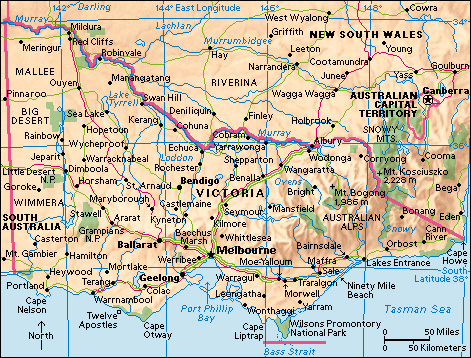Albury-Wodonga (pop. 91,516) is an urban regional growth center on the Murray River, Australia. The city of Albury is in New South Wales, and the smaller city of Wodonga is 41/3 miles (7 kilometers) away across the Murray River, in Victoria.

Albury is the marketing center for the many people who live in the area. The area produces dairy products, honey, livestock, forest products, poultry, wheat, and wool. The city’s factories make clothing, electrical and electronic equipment, engineering products, fibrous plaster, flour, woodwork, automobile transmissions, plastic products, and prefabricated buildings. The city is linked by road, rail, and air to Sydney, Melbourne, and Canberra.
Before the arrival of European settlers, Aboriginal people called the Wiradjuri inhabited the Albury area. The Duduroa people probably once lived in the Wodonga area. Wodonga is believed to be an Aboriginal word for a type of edible nut. Albury was named after the village of Albury, in Surrey, England.
In 1824, the Australian explorer Hamilton Hume forded the Murray River at the place where Albury now stands. Albury became a municipality in 1859, and a city in 1946.
In the early 1970’s, as populations grew along Australia’s coasts and in its major cities, the federal and state governments encouraged people to move inland. This process was called decentralization. The governments of New South Wales and Victoria, along with the federal government, chose the Albury-Wodonga region as the first major decentralization plan. The three governments signed an agreement in January 1973 for promotion of Albury-Wodonga into a major decentralization region.
